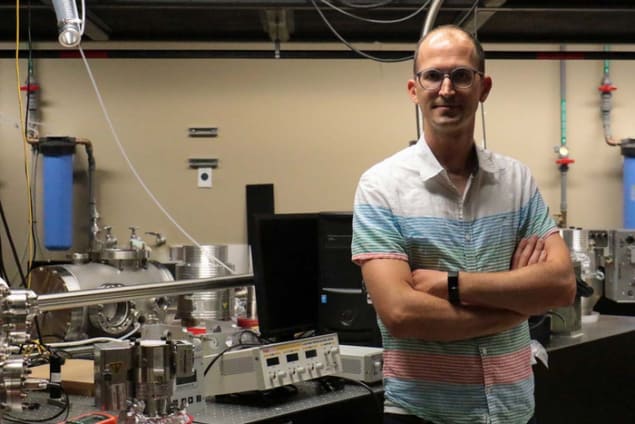
The world’s first optical oscilloscope – an ultrafast device for measuring the electric field of light – has been constructed by researchers at the University of Central Florida (UCF), US. The new instrument works by converting light oscillations into electrical signals and could help advance communication technologies.
Measuring the electric field of light is difficult because of the high frequencies at which light waves oscillate. While today’s most advanced techniques can “read out” electric fields that oscillate at gigahertz frequencies (covering the radio and microwave regions of the electromagnetic spectrum), light waves oscillate much faster than this. As a result, current instruments can only resolve the average signal associated with a pulse of light, not the peaks and troughs that exist within a single pulse. This is an important shortcoming because it is exactly these peaks and troughs that are used to carry data, for example in optical waveforms sent down a fibre-optic cable.
Ultrafast gates
To characterize such optical waveforms completely, photonics experts need an ultrafast gate that operates within one half-cycle of whichever field oscillation they wish to measure. In most techniques – including electro-optic sampling (EOS) and attosecond streaking, to name but two – researchers achieve this by using few-cycle sampling pulses that have much shorter wavelengths than the field they are trying to characterize.
Recent studies, however, have revealed that other techniques, including tunnel ionization, higher-order harmonic generation or multiphoton excitations in solids, can be used to make a sub-cycle gate. In this nonlinear optics approach, the laser field itself becomes the measurement tool.
TIPTOE toward success
In the new work, which is described in Nature Photonics, the UCF team showed that the nonlinear photocurrent created in a silicon-based image sensor when intense mid-infrared pulses are shone onto its surface can also provide such an ultrafast gate. This experimental measurement is an extension of a technique known as TIPTOE, which stands for tunnelling ionization with a perturbation for the time-domain observation of an electric field. In this technique, the researchers use an intense “fundamental” pulse with a (central) wavelength of 3.4 microns to create packets of charge carriers (electrons) in the pixels of the silicon-based image sensor by exciting multiple photons. This is what produces the photocurrent.

Complex light waves measure hidden objects
According to the team, being able to resolve the electric-field waveform of a few-cycle light pulse in a single shot holds numerous possibilities for fundamental physics, where it could be used to resolve light–matter interactions that take place on a timescale of attoseconds. “Fibre-optic communications have taken advantage of light to make things faster, but we are still functionally limited by the speed of the oscilloscope,” team leader Michael Chini says. “Our optical oscilloscope may be able to increase that speed by a factor of about 10,000.”



